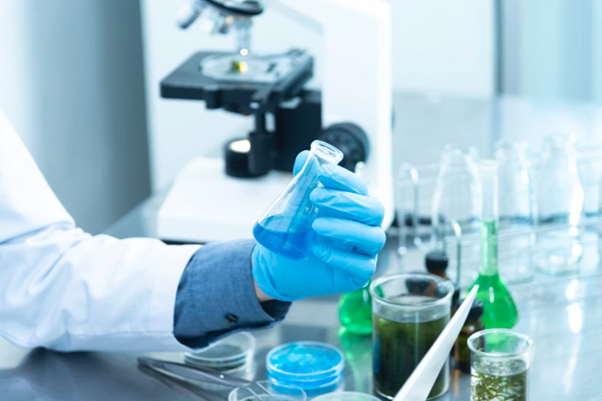
Sales of reaction intermediates have been growing steadily over the past few years. This is due to the increasing demand for these chemicals from industries such as pharmaceuticals, agrochemicals, and dyes & pigments. Reaction intermediates are used in a variety of reactions, such as those involved in the production of drugs, pesticides, and colorants. Here, we take a look at the factors driving the growth of reaction intermediates sales globally.
1. The growing pharmaceutical industry is the major driver of reaction intermediates sales
The pharmaceutical industry is one of the largest users of reaction intermediates. These chemicals are used in the production of a wide range of drugs, from painkillers to cancer treatments. The global pharmaceutical industry is expected to grow at a CAGR of 4-5% between 2018 and 2025. Additionally, chemical intermediates used in the manufacture of active pharmaceutical ingredients (APIs) are expected to grow at a CAGR of 6-7% during the same period. This growth is being driven by the rising demand for drugs, as the global population ages and the prevalence of chronic diseases increases.
2. Why are reaction intermediates gaining popularity?
Reaction intermediates offer a number of advantages over traditional starting materials. They are often more reactive and can be used in a wider range of reactions. This allows for the production of a greater variety of products with fewer steps. Additionally, reaction intermediates can often be sourced at a lower cost than traditional starting materials. It’s no wonder that reaction intermediates sales are growing at a rapid pace. Also, the trend of using renewable feedstocks is gaining popularity, as it reduces the reliance on fossil fuels and helps to protect the environment.
3. The future of reaction intermediates sales looks bright
The global market for reaction intermediates is expected to reach $42.3 billion by 2025, growing at a CAGR of 5.5% during the forecast period. This growth is being driven by the increasing demand from the pharmaceutical and agrochemical industries. Additionally, the growing popularity of renewable feedstocks is expected to boost the market for reaction intermediates in the future. It’s clear that the future of reaction intermediates sales is looking bright. This is good news for the companies involved in the production and sale of these chemicals. If you’re looking to get involved in this growing market, now is the time to do so.
4. Key players in the reaction intermediates market
There are a number of key players in the reaction intermediates market, such as BASF, Dow Chemical, and Evonik. These companies are involved in the production of a wide range of chemicals, including those used in the pharmaceutical and agrochemical industries. They have a strong presence in both developed and emerging markets and are well-positioned to benefit from the growing demand for reaction intermediates. Additionally, these companies have the financial resources and manufacturing capabilities to invest in research and development, which will allow them to develop new and innovative products.
5. Reaction intermediates are an essential part of the chemical industry
Reaction intermediates are used in a wide range of reactions, from those involved in the production of drugs to those used in the manufacture of dyes and pigments. They play an essential role in the chemical industry and are expected to continue to grow in popularity due to their advantages over traditional starting materials. With the growing demand from the pharmaceutical and agrochemical industries, reaction intermediates are poised for strong growth in the years to come. Also, the trend of using renewable feedstocks is expected to boost the market for reaction intermediates in the future.
6. The Asia-Pacific region is the largest market for reaction intermediates
The Asia-Pacific region is the largest market for reaction intermediates, accounting for more than 50% of global sales in 2016. The region is expected to grow at the highest CAGR during the forecast period. The rapidly growing economies in the region, such as China and India, are the major drivers of market growth in the Asia-Pacific region. The increasing demand for reaction intermediates from end-use industries, such as pharmaceuticals, agrochemicals, and dyes & pigments, is driving the market growth in the region. The growing population and rapid urbanization are also some of the key factors driving the market growth in this region.
Why is the chemical industry important?
The chemical industry plays a vital role in the global economy, providing the raw materials that are used in a wide range of industries, from construction to healthcare. The industry is essential for the development of new products and technologies and is constantly evolving to meet the changing needs of society. The future growth of the chemical industry is dependent on a number of factors, such as the increasing demand from emerging markets, the shifting trends in the global economy, and the ever-changing regulatory landscape. Additionally, the industry is facing challenges, such as the need to reduce its reliance on fossil fuels and to find more sustainable and environmentally friendly ways of operating.
What are some of the challenges facing the chemical industry?
The chemical industry faces a number of challenges, such as volatile raw material prices, stringent environmental regulations, and increased competition from alternative materials. Additionally, the industry is facing a number of challenges associated with Brexit, such as the loss of access to the European market, the impact of tariffs, and the need to renegotiation trade deals. Despite these challenges, the industry is expected to continue to grow in the years to come. While developed markets are expected to remain the largest consumers of chemicals, the demand from emerging markets is expected to grow at a faster pace.

Reaction intermediates are an essential part of the chemical industry and are expected to continue to grow in popularity due to their advantages over traditional starting materials. With the growing demand from the pharmaceutical and agrochemical industries, reaction intermediates are poised for strong growth in the years to come. Additionally, the trend of using renewable feedstocks is expected to boost the market for reaction intermediates in the future. By understanding the factors driving the market, companies can strategies their operations to capitalize on the expected growth.
